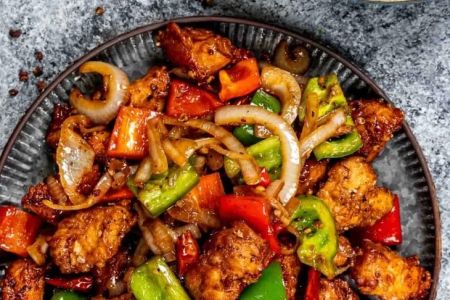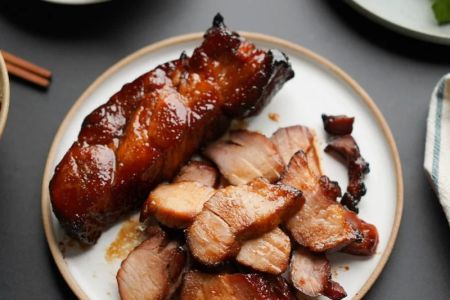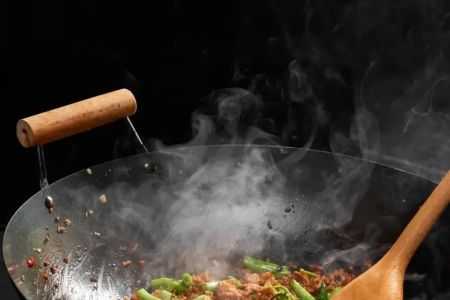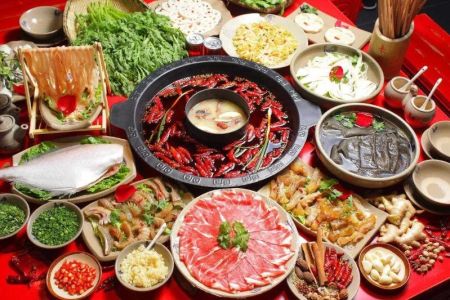Sustainable Chinese Food: A Greener Approach to Traditional Cuisine
- 1. Understanding Sustainable Chinese Food
- 2. How Sustainable Chinese Food Benefits the Environment
- 3. Ingredients and Practices for Sustainable Chinese Cooking
- 4. Popular Sustainable Chinese Dishes
- 5. How to Incorporate Sustainability in Your Chinese Meals
- 6. Exploring Sustainable Chinese Food Brands
1. Understanding Sustainable Chinese Food
Sustainable Chinese food combines the rich traditions of Chinese cuisine with modern environmental consciousness. It aims to minimize the ecological footprint of meal preparation while still embracing the bold flavors and diverse ingredients that define Chinese cooking. By using locally sourced, organic, and seasonal ingredients, sustainable Chinese food promotes both health and the environment.
As awareness of climate change and resource depletion grows, many chefs, home cooks, and food producers are adopting sustainable practices. The concept of sustainability in food involves sourcing ingredients that are grown or raised without harming the environment, reducing food waste, and choosing options that have a smaller carbon footprint.
In this article, we will explore how to create sustainable Chinese meals, the benefits of such practices, and the ingredients and dishes that can help you align your culinary choices with eco-friendly principles.
2. How Sustainable Chinese Food Benefits the Environment
Sustainable Chinese food practices offer numerous environmental benefits, contributing to the overall well-being of our planet. Here’s how:
- Reducing Carbon Footprint: By sourcing locally grown produce and proteins, sustainable Chinese food reduces the carbon emissions that come from importing ingredients. Using ingredients that are in-season also cuts down on the need for transportation and refrigeration, which further lowers environmental impact.
- Supporting Biodiversity: Sustainable farming practices, such as crop rotation and organic farming, help preserve biodiversity by avoiding monoculture farming and chemical pesticides. Choosing sustainably raised meats and produce in Chinese dishes supports ecosystems and promotes long-term soil health.
- Minimizing Food Waste: Sustainable cooking methods also focus on minimizing food waste. Ingredients like bamboo shoots, mushrooms, and root vegetables, which are often overlooked, can be utilized in various dishes, reducing food waste.
In addition to these environmental benefits, sustainable Chinese food offers healthier options, with fewer chemicals and preservatives, making it better for both you and the planet.
3. Ingredients and Practices for Sustainable Chinese Cooking
Key to creating sustainable Chinese food is understanding which ingredients to choose and how to cook them with minimal waste. Here are some practices and ingredients to focus on:
- Locally Sourced and Seasonal Produce: Opt for fresh, seasonal vegetables such as bok choy, napa cabbage, and winter squash. Sourcing these locally reduces transportation emissions and supports local farmers.
- Plant-Based Proteins: Traditional Chinese cooking features a variety of plant-based proteins, such as tofu, tempeh, and legumes. These ingredients have a much lower environmental impact compared to meat and can be a healthy, sustainable alternative.
- Organic and Free-Range Meats: If you choose to include animal proteins in your dishes, opt for organic, grass-fed, or free-range meats. These options have lower environmental footprints than conventionally raised meat products.
- Minimizing Oil and Sauces: Many Chinese recipes use oils and sauces, which can contribute to excess waste if overused. By practicing portion control and using sauces sparingly, you can reduce food waste while still enjoying the flavors.
Adopting these sustainable practices allows you to enjoy traditional Chinese dishes while minimizing your environmental impact.
4. Popular Sustainable Chinese Dishes
Several popular Chinese dishes are naturally aligned with sustainability. These dishes incorporate plant-based ingredients, locally sourced vegetables, and eco-friendly proteins. Here are some examples:
- Vegetarian Mapo Tofu: A plant-based version of the classic Sichuan dish, vegetarian Mapo Tofu is made with tofu, mushrooms, and chili sauce. It’s a flavorful dish that’s easy to prepare sustainably.
- Stir-Fried Vegetables with Tofu: Stir-fried vegetables like bok choy, carrots, and broccoli paired with tofu create a nutrient-rich, low-impact meal.
- Congee: A hearty rice porridge that can be customized with various toppings like pickled vegetables, mushrooms, and a touch of soy sauce. This dish is filling, sustainable, and easily adapted for different dietary needs.
- Chinese Hot Pot: Hot pot is a versatile and sustainable meal. You can use a variety of fresh vegetables, tofu, and plant-based proteins for a communal and eco-friendly dining experience.
These dishes not only highlight the versatility of Chinese cuisine but also demonstrate how simple it is to incorporate sustainability into everyday meals.
5. How to Incorporate Sustainability in Your Chinese Meals
Incorporating sustainability into your Chinese meals doesn’t have to be complicated. Here are a few easy steps to make your meals more sustainable:
- Plan Your Meals: Plan meals around seasonal, locally available ingredients. Doing so reduces reliance on imported goods and ensures that you’re eating foods that are both fresher and more environmentally friendly.
- Cook in Bulk: Cooking large batches of meals and storing leftovers reduces food waste. Chinese dishes like stir-fries and soups are perfect for batch cooking.
- Choose Eco-Friendly Cooking Methods: Opt for cooking techniques that preserve the natural flavors of your ingredients, such as steaming, boiling, or stir-frying with minimal oil.
By making small adjustments to how you prepare your meals, you can reduce waste, save energy, and make your Chinese food more sustainable.
6. Exploring Sustainable Chinese Food Brands
As demand for sustainable food options grows, several brands are offering eco-friendly Chinese ingredients and meals. These brands focus on sourcing organic, fair-trade, and locally grown produce. Some popular sustainable Chinese food brands include:
- Organic Panda: Known for its organic sauces and ingredients, Organic Panda offers a variety of products that are both sustainable and high-quality.
- Green Mama: This brand specializes in plant-based Chinese foods, including tofu and vegetable stir-fries, with a commitment to sustainability and reducing environmental impact.
- EcoChina: EcoChina offers a range of sustainably sourced ingredients for making traditional Chinese meals, from soy sauces to rice and noodles.
For more information on sustainable Chinese food brands and to explore eco-friendly ingredients for your next meal, visit Chinese Food for a variety of sustainable options.






![Top Chinese Restaurants for Authentic Cantonese Cuisine in [Your City]](https://img.gochinarose.com/d33/2507/4157910400_450x300.webp)
